- Sale
- 360 Degree Photography
- Battery and Battery Grip
- Backgrounds Even Color
- Backgrounds with Print
- Background Systems
- Cameras
- Camera Accessories
- Camouflage
- Continuous and Videolight
- Filters, Converters and Rings
- Photo frames
- Clamps and Adapters
- Cases and Bags
- Bulbs
- LED Lighting
- Magnifying Glasses
- Macro Photography
- Microphones
- Microscopes
- Night Vision Devices
- Shooting Tables and Tents
- Outdoor and Survival
- ID Photo Systems
- Flash Umbrellas
- Printers
- Reflectors
- Reflectors and Snoots
- Riflescopes
- Rigs Sliders and Stabilizers
- Camouflage Hides
- Smartphone Accessories
- Soft Boxes and Beauty Dishes
- Speedlite Camera flashes
- Spotting scopes
- Tripods and Ballheads
- Strobist
- Studio Accessories
- Studio Flashes and Kits
- Tecco Ilford Print Media
- Telescopes
- Trigger Sets
- Binoculars
- Thermal Imaging
Magnifiers
Magnifiers are small but strong enlarging structures made up of lenses that are supported in a setting or rim. Also known as Loupes, the strength of our magnifiers range between 2x and 20x and can consist of one, two or three lenses.
A range of different people such as biologists, stamp collectors, watchmakers and jewelers use magnifying devices. In addition, the vision impaired or those struggling to read small text or see small images also utilize magnifiers. Due to these varying uses, many different types of magnifiers are available.
Types of Magnifiers
Doublet Magnifier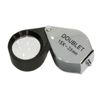
A doublet magnifier is a compact magnifier and as the name suggests, consists of two lenses making it very accurate. Due to their precision and accuracy, the doublet magnifieris most commonly used by biologists, jewelers and watchmakers and has a magnification strength of between 5x and 20x.
Triplet Magnifier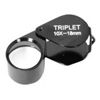
Similar to the doublet magnifier, the triplet magnifier has three lenses and due to this, is even more accurate and precise. In addition, the 5x to 20x strength of thesemagnifiers make it ideal for observation of minerals and stones.
Linen Tester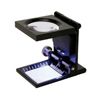
A linen tester is a magnifier with a single lens set in an adjustable frame. This ensures that the magnifier sits precisely where the object is to be viewed. In most cases, a linen tester has a scale whereby thread can be counted.
Table Magnifier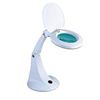
A table magnifier is supported by its own stand is in some cases has an adjustable arm. These magnifiers are often used for delicate electronic repair work. As the magnifier sits upon a table, the user has both hands free to complete his work. Some brands of table magnifiers also include LED lighting to be able to see the object better.
Bug Viewer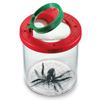
The bug viewer is perfect for people interested in the observation of bugs and insects. These bugs and insects can be placed in the container to be observed under the 2.5x to 3x magnifying glass. Small children who want to catch and/or observe bugs often use such magnifiers.
Stand Magnifier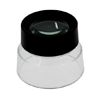
Stand magnifiers are generally used for the viewing of images, photos and post stamps. The stand magnifier is useful as it mobile and can be placed in the position you wish to view your object from. Due to the stand the magnifier sits on, the user is able to observe with both hands free. In some instances, a similar magnifier that has lighting is added to provide more light to the object.
Hands Free Over the Neck Magnifier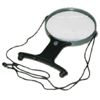
Generally, hands free over the neck magnifiers are used for art and craft, sewing and knitting. Attached to a cord that is placed around the users neck, this hands free magnifier contains two rubber ‘feet’ which rest against the users chest and allow the user to look through the magnifier and use both hands to handle the object they are viewing.
Headband Magnifier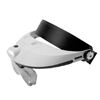
The headband magnifier is worn over the head leaving both hands free for working. The headband is fully adjustable to fit any person. These magnifiers range from hobby to professional use such as stamp and coin collectors, watchmakers, jewelers, engravers, physicians, dentists and doctors.
Dome Magnifier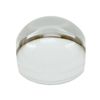
As the name suggests, the dome magnifier is a dome shaped vision aid, used for reading newspapers, documents, maps, bills and magazines and viewing post stamps and photos. The magnifier works by gliding it along the object you wish to read and/or view.
Bar Magnifier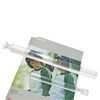
Similar to the dome magnifier, the bar magnifier is ideal for reading newspapers, documents, maps, bills and magazines. The magnifier works by gliding it along the object you wish to read.
Handheld Magnifier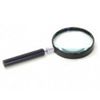
The handheld magnifier is the original and most well known magnifier. The handheld magnifier has a single lens with the strength of 1.5x to 5x. These magnifiers are used for reading newspapers, document or magazines and looking at maps, bills or photos.
Pocket Magnifier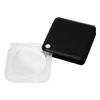
The pocket magnifier is actually just a term used for all magnifying glasses that fit inside your pocket. This can include, doublet or triplet magnifiers and linen testers.